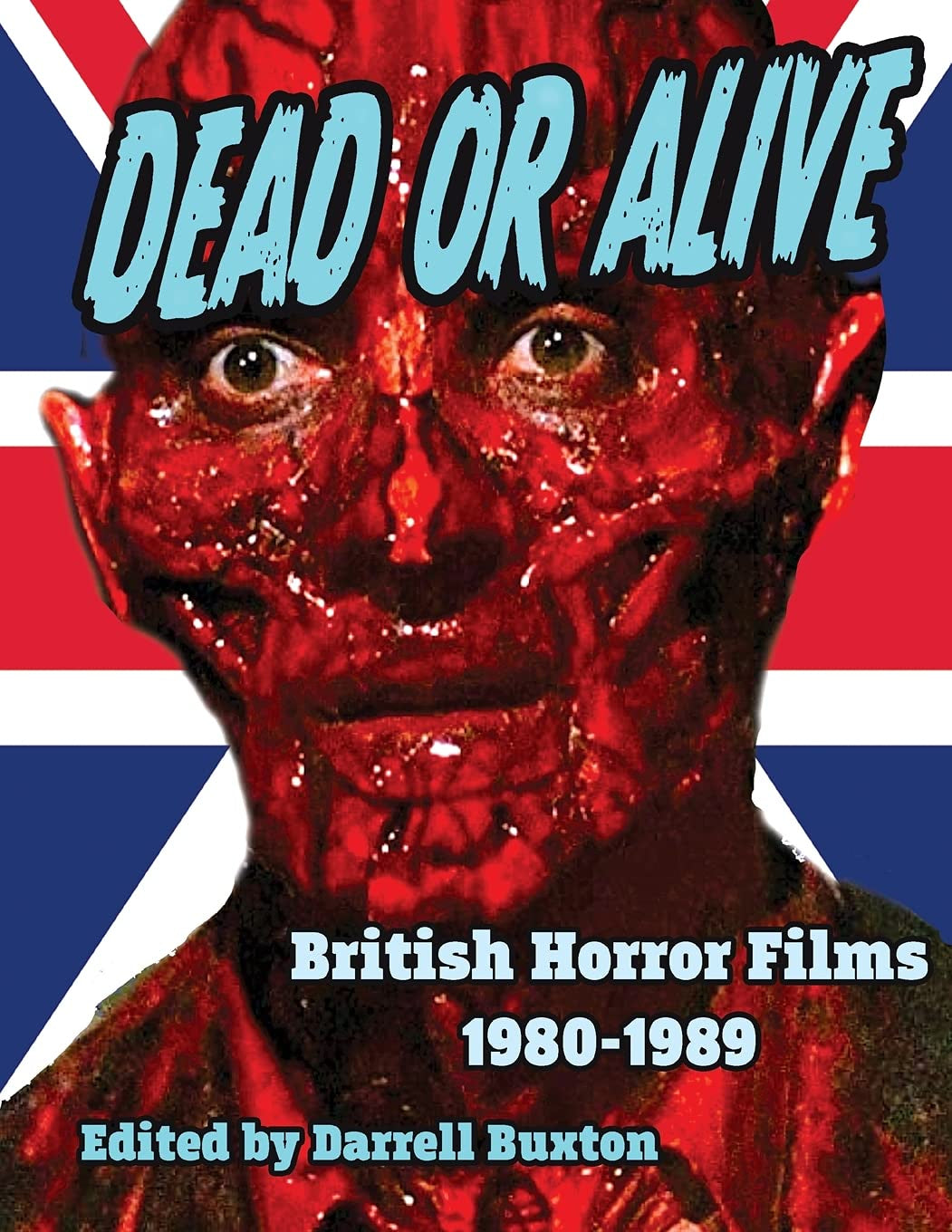Dead or Alive British Horror Films 1980-1989
WE HAVE SUCH SIGHTS TO SHOW YOU!
With British cinema at its lowest ebb--audience levels dwindling, attacks from censors and authorities, cuts in funding--could this once-proud area of the entertainment business be saved?
"Dead or Alive" is the first book-length study of British Horror Cinema of the 1980s, examining and celebrating the diversity of genre movie production in the U.K. during this period of flux. From Pinhead to the American Werewolf, from naked alien space vampires to Kenny Everett, read how the post-Hammer scene ventured to keep the fright flame burning in Thatcher's Britain.
Rumor has it that the 1980s rather dismissed doom and gloom in favor of bright primary colors, sculpted hairstyles, MTV, legwarmers, compact discs, and John Hughes. Bear in mind, however, that British television at the outset of the period in question was awash with supernatural and psychological chills, from Hammer House of Horror to Rentaghost, Sapphire & Steel to Tales of the Unexpected. In the music world, every Duran Duran or Spandau Ballet was countered by acts daring to delve into darker territory --Siouxsie and the Banshees' 1981 album Juju was laced with voodoo, specters, and arcane practices; Iron Maiden frequently used classic horror references and created their own monstrous mascot, skeletal super-fan "Eddie," the "Goth" movement made inroads particularly in the North of England, via The Sisters of Mercy, Bauhaus, The March Violets and Fields of the Nephilim, and even the top-selling, radio-friendly stars of the day took genre-sprinkled items to the top of the charts (the austere, bleak "Ghost Town" by The Specials, Frankie Goes to Hollywood's controversial and aware nuclear warning "Two Tribes," even Adam and the Ants' smash-hit paean to dandyism "Stand and Deliver)." With unemployment and oppression rife among certain areas of the country and within particular communities, the looming presence of something sinister tainted the official picture being presented by the authorities, of opportunity for all, jam tomorrow, loadsamoney. (Although perhaps American filmmaker Oliver Stone fused it better than anyone, bringing an altogether Faustian/Mephistophelean quality to his 1988 study of stock exchange culture, Wall Street, the "greed is good" ethos of which may just have been the most frightening movie mantra of these divisive times.)
So, enjoy a trip back to the 1980s quite unlike any other, an alternate vision of the era. With the classic manufacturers of big-screen British chills, Hammer, Amicus, Tigon and others, lying dormant or completely out of action, a new, diverse, unconnected and decidedly different wave rode in to fill the gap. Not always successfully, sure, but (especially in hindsight) with considerable ambition to bring something fresh and unique to the terror table. This book is for those who prefer the challenge of the Lament Configuration to that of Rubik's Cube.




